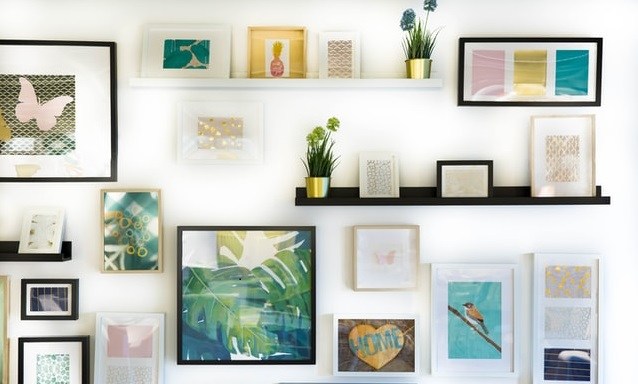How to price your art?
How to price painting? How to price commission art? How to price photography prints?
These are essential questions, and thank you for asking that. Your pricing will affect how potential buyers perceive your art and affect your sales. It's not the only thing that determines your success, but it is strongly associated with it.
We, at Art Storefronts, are dealing with these questions almost daily. We collect all the data from the artists and photographers, and we must be honest with you. There is no secret formula on how much you should price your art, and there is no shortcut. But what we can do is help you out by sharing best practices and explain why they are good.
Let's begin.
Understanding the bigger picture

All artists are trying to attract high-net individuals interested in buying their art at a high price. But the truth is that it is way harder to accomplish it when everybody is trying to do something. And when you focus only on that and don't see a bigger picture and higher potential, you are more likely to have a problem.
Therefore, customers that don't have that much money are also valuable. If they follow your art, like what you are doing, or even talk about it, they might have a good influence on your sale to high net buyers.
When it comes to numbers, if you, for example, in 2 months sell ten artworks for $300, you will get $3000. If you sell one work for $2500, you will earn less than in the first case. It doesn't necessarily have to be the case, but you understand the point. Just because you are selling your artwork at a high price does not mean that you will earn a lot of money.
We would kindly advise you to have different pricing points!
Having different pricing points
Different pricing points allow you to be accessible to a broader audience. The good thing is that you are in the art and photography business, enabling you to set your pricing points easily.
On the one hand, you can sell commissions at a higher price; on the other hand, you can sell originals at a bit lower price, then you can sell limited editions at a lower price, and in the end, you can sell prints at an even lower price.

Different artwork sizes - different prices
It's logical, but we will explain. For example, if we talk about bigger-sized originals, you will need more material, more supplies, and more time to create it than lower-sized art. Besides that, it would be strange if more extensive art has lover pricing.
You don't need to calculate prices proportionally; you can deliberately emphasize X sizing. It's up to you.
Different media types - different prices
Also, you can offer different media types for your art and photography prints, such as canvases, luster photo paper, acrylic… Quality media types will have higher prices. It's important to explain each media type because some people might not know the difference between them. And when people don't understand something, they're less likely to buy it. Usually
Furthermore, you can have different finishings (Mount Block, 2" Mat...) or offer prints without them and set different prices.
You can see an example from one of our clients here.

Art sales as an excellent marketing tool
When setting your prices, keep in mind that you will sometimes want to offer a discount on some artwork or sale on all of them. If you aren't happy to earn 15% less than your pricing, you might consider lifting your pricing slightly.
If you are now thinking why would you ever give a discount and that your art should have a fixed price, you will most likely change your mind in the future.
Sales are a compelling way that drives sales in almost every industry, especially in art businesses.
And how do we know it?
We are constantly testing new ideas and finding ways to sell more paintings, photography, sculptures… We are drowning in data, which is the thing that we tested a lot, so you don't need to. It works.
Have a Look at this statistic, and everything will be clear: About 40% of shoppers made online purchases on Black Friday 2019. (view source)
That is huge. Sales incentive is an exciting thing, you must admit.
A brief look at a competition

The thing that is good to have in mind is your competition. It's hard to determine who your competition is because every art is special and unique.
But you can find something in common. If you are, for example, an abstract artist who uses a watercolor palette, you can find some abstract artists in your state who are also using these colors.
You can see what their artist prices are and what they are offering. But that will only inform you.
We don't recommend just copying their prices. Firstly, you are unique. Secondly, you don't even know how many people are buying their art, and even if you do know and are doing excellent, you would instead figure out their marketing strategy than copying their prices.
Uniqueness is also essential. Ask yourself, for example: are you offering specific commissions art that no one or a low amount of people are selling?
If the answer is yes, then you can have high pricing on that...
What I think my art pricings should be

Ask yourself these questions:
1. How many hours have you invested?
2. Who do you intend to sell it to?
3. What are your expenses (printing, supplies...)?
Besides, it's also helpful to know how your target group perceives your art. To be more precise, what they think it's a cost.
We will let you be creative with finding this out. It's not must-have information, but it can help.
You can experiment with prices
If things are not working as you think they will, you might decrease or even increase your prices. It's great to ask your target group and be open to them about it.

Furthermore, it’s impressive how easy and reversible increasing the price points is. All you need is a good website and a few clicks.
But, always remember. You might need to reconsider your marketing strategy, not prices, or need to be patient. It's not that easy to sell your art, but you could even make a living from it with patience and the right approach.
We hope that we have helped you and answered your question on how to price your art. Please be free to join us live on our open marketing session and ask us anything you want. We are more than happy to help.


